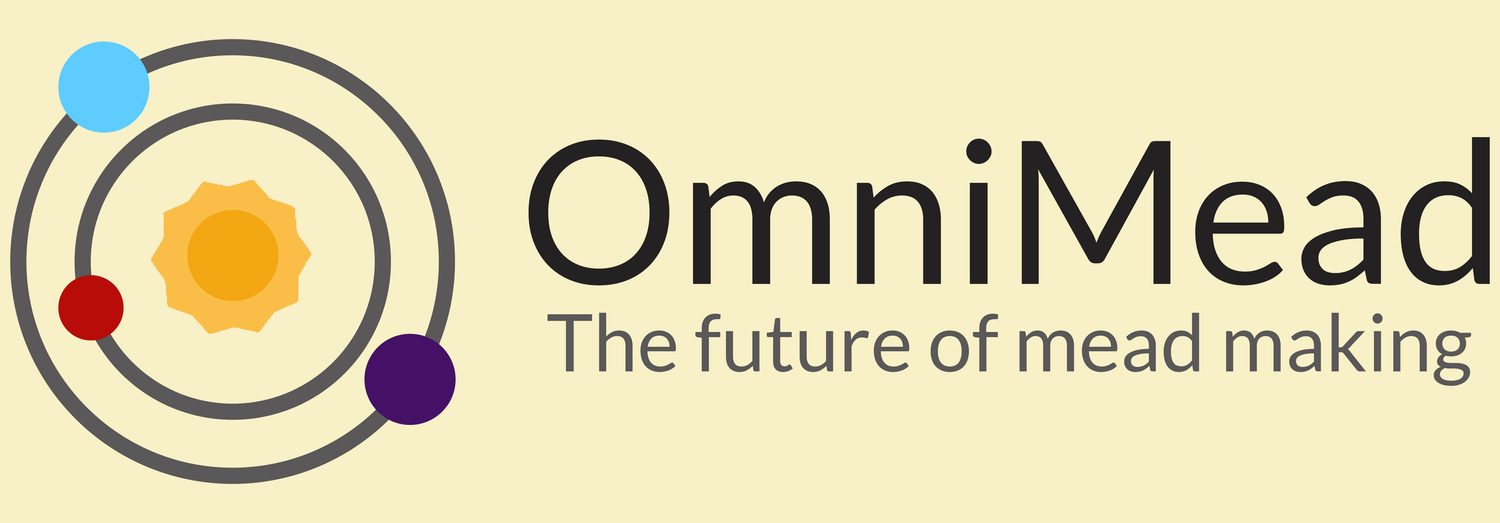Ingredients and Recipe Basics
Last Updated: September 10th 2021
To start, it is best to make a standard mead to get your technique down, then move on to the various styles. It is difficult to hide flaws in a standard mead. Learn to make a clean standard mead and all your other meads will shine!
Let’s start with ingredients: Water, Honey, Nutrients, and Yeast. This is the bare minimum to make good mead. Technically, you can make mead without nutrients, but this leads to harsh off-flavors (fusels) caused by nutrient-starved yeast that take years to age out. With nutrients, you will enjoy your mead in as little as a month. Here, we will step through the ingredient specifics and the importance of each.
Water
Since water is the major part of your mead, it better be good! You want good spring water. NOT distilled water. Spring water contains trace minerals necessary to keep your yeast healthy. Distilled water is devoid of minerals and will seriously stress your yeast if you don’t add minerals back.
Tap water should generally be avoided. Most tap water is treated with chlorine or chloramines. Chlorine can be boiled away, but chloramines cannot be boiled off. These chemicals impede fermentation and yield bandaid-type off-flavors in the final product.
Well-based water may or may not be good for mead making depending on mineral and sulfur content. I would recommend a carbon-based filter for well water if you decide to test it. You can also do a side by side testing of your well water and spring water to determine which is better!
Honey
Honey makes mead. Good honey makes good mead. Great honey makes great mead. Spend some time tasting different kinds of honey. Train yourself to taste the underlying flavor beyond the sweetness. This is the element that the honey imparts into your mead. Every honey is unique!
Be wary of grocery store honey. It may or may not even be honey - often it is sugar syrup due to some shady practices! The best way to obtain good honey is to buy/order direct from a beekeeper. Your local “beek” (beekeeping geek) is great as well as online beekeeping websites. Farmers markets are a great place to find your local beeks.
Varietal honey comes from bees that have pollinated mostly one type of flower. These kinds of honey can be extremely light to extremely dark. All of them are different and can have wonderful uses for the creative mead maker. Try to pair the honey you have with the recipe you want to make!
Honey should be raw. If it has wax and bee parts in it, it is good raw honey. Never, ever boil honey. Even if you are making a bochet (slow cooking is better). Boiling drives off the wonderful aroma compounds that make raw honey worth seeking! Do not worry about contamination. Honey is naturally antibacterial. Nothing can actively grow in honey due to extremely low water content, low nutrient content, and high osmotic pressure. The only exception to this is extremely old crystallized honey or honey that isn’t properly capped. Crystallized honey is very rarely an issue, but it does happen. Buying from a trusted source that knows how to tend bees will eliminate any possibility of improperly capped honey.
Nutrients
For best practices, I always advise the use of nutrients. Nutrients are absolutely required to make excellent mead consistently and quickly. Due to the complexity of nutrients available to mead makers, we have a separate article found here.
Yeast
Yeast are like tools. You don’t use a hammer on a screw. Yeast choice will depend a lot on the particular ingredients in a mead recipe as well as your personal tastes. If you are new and starting out, I suggest largely neutral yeast that imparts very little aroma or flavor. This allows you to appreciate the flavors of the honey first. Good neutral yeasts include Wyeast 1388, US-05, and EC1118. D47 is great if you have temperature control.
After experiencing neutral profiles, branch out to other yeasts in traditional meads to determine what aroma and taste components they provide. Over time, you will discover what you prefer. Some good yeasts to try are W15, DV10, D21, and 71B. If you want to get really adventurous (or lack temperature control), Kviek yeasts such as Voss, Lutra, and Hornidal are wonderful options for adventurous mead makers.
Yeast have a temperature range stated by the manufacturer. Try to stay on the low end of the range. When yeast convert glucose to ethanol and CO2, they produce heat. The faster the ferment, the more heat is produced. It is not uncommon for your fermenter to reach 10 F higher than ambient temperature! Batch size also contributes to the temperature increase. The larger the batch, the more difficult it is to radiate the heat away. For batches larger than 5 gallons, I highly suggest a temperature-controlled chamber.
In addition, the fermenting temperature can dictate what esters yeast produce. Belgian strains are known to produce esters at the high end of the temperature range while English strains produce esters at the low end. Research your yeast carefully!
For dry yeast, GoFerm rehydration is a must. For liquid yeast, the preparation is different. See our article here on yeast rehydration and nutrient protocols.

